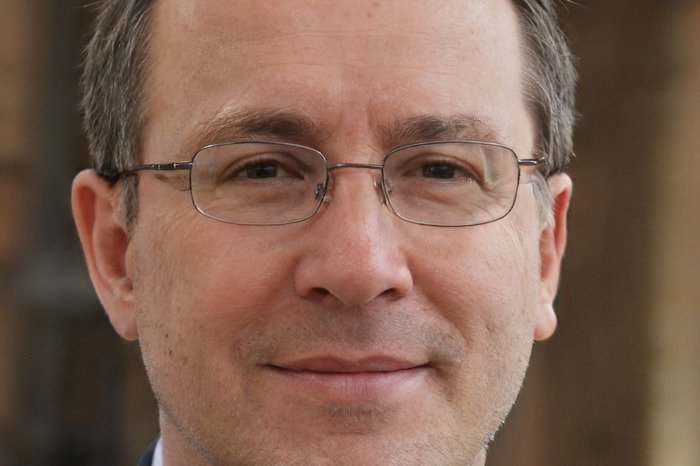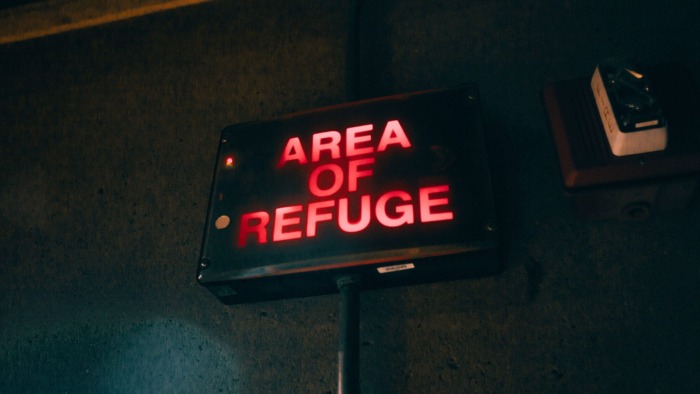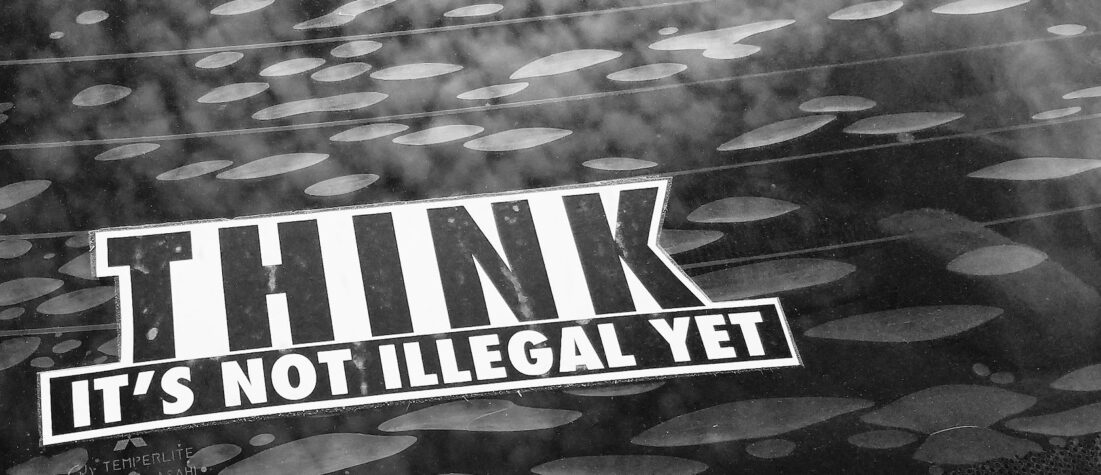
In today’s technology-facilitated and boundaryless world, emergent learning takes place at the intersection of ongoing human experience and tacit knowledge, technology, collaboration, complex and novel challenges, and conditions of uncertainty and ambiguity. I believe holding space for emergent learning is one of the pre-conditions for creating a thrivable and anti-fragile organization, one which flourishes in the face of change and disruption by leaning into the emerging future. I have written about designing organizations as interconnected communities to stay responsive and resilient here and here.
By embracing the power of networks and social platforms along with the affordances of mobile and cloud, distributed and boundaryless organizations can become platforms for emergent learning. When fully realized and supported, emergent learning can transform an organization — making it agile, adaptable, and resilient as well as responsive, innovative, and evolutionary. Emergent learning is always contextual, collaborative, and goes beyond the norms of intended learning. It cuts across formal organizational structures and siloes and connects the inherent tacit knowledge and the ongoing collective experience, building a shared awareness of moving toward a larger Evolutionary Purpose for all concerned.
How is it different from continuous learning?
Creating a culture of continuous learning is something that all organizations strive for and wish to achieve. However, I am distinguishing between continuous learning and emergent learning thus:
Continuous learning — facilitated by technology, cooperation, and collaboration — keeps an organization efficient at delivering business as usual, building core skills, and spreading best practices across the organization. This is essential to build a robust organization with a diverse knowledge pool, a culture of sharing, and learning agility. However. It doesn’t (most often) challenge existing paradigms or call for a shift in perspective — essential capacities in the face of the unknown.
When faced with complexity and ambiguity, learning from the past or continuing to build on existing knowledge doesn’t always work. Emergent learning requires a different approach. It is about tapping into the as yet unknown and unsaid, sensing into what is wanting to be born, using collective sensemaking to manifest the “magic in the middle”. It is a bit like donning a different set of lenses and seeing the world very differently. Enabling emergent learning requires organizations to shift from a mechanistic view to a living-systems view of organization design. I have written about this here.
What are the enabling conditions for emergent learning?
There are six inherent conditions and practices that can nurture and support emergent learning in organizations:
Sensing and Sensemaking:
In a complex, deeply connected, and constantly changing world, sensemaking is an important capacity. It is a combination of seeing the specifics as well as the larger picture, and connecting the dots to see the overarching patterns. Organizations that allow information to flow freely irrespective of positions and power, naturally create the conditions for sensemaking. Information is the energy that fuels sensemaking. Traditionally, information has been seen as a currency of power; the more powerful has access to more information. This naturally restricts all decision making to the top of the organization. Information gets increasingly filtered and censored as it travels down the pyramid losing its overall meaning and context. This not only creates a lacunae in the understanding of employees working at the lower levels, it is also a sad loss for the organization. The organization loses the insight of those closer to the challenges, becomes less responsive, and runs the risk of eventually becoming obsolete.
In a VUCA world, sensemaking is what keeps an organization alive and thriving. When everyone in the organization has access to freely flowing information, they can interpret, respond, and build shared awareness of the context and the ecosystem. Collective sensemaking automatically helps people to filter out unnecessary information, which would otherwise have derailed the organization. Moreover, being trusted with information builds loyalty, responsibility, and engagement. Most organizations struggle with the latter. IMHO, it happens when people are fully and unconditionally involved, and are part of a shared and meaningful journey. This shared meaning becomes the North Star that people use to guide their decisions, actions, and responses to emerging situations.
Sensemaking is foundational to emergent learning. As individuals and teams begin to see the larger patterns, new insights and breakthroughs occur leading to transformative learning. When this kind of learning becomes the norm, an organization cannot stagnate. It stays in a state of constant communication with its ecosystem — adapting and evolving to its next level. Just like any other living system.
Generative Conversation:
The importance of this cannot be stressed enough. I have written about this in my article Reinventing Organizational Learning, where I first proposed the idea of shifting from intended learning to emergent learning to thrive in the VUCA world. Otto Scharmer explains Generative Conversations in his Four Levels of Listening framework that leads to the Four Levels of Conversation. I am expanding on his thoughts. Organizations need to build the capacity to have such conversations where individuals and teams “hold space for something new to be born.” This requires completely shifting away from all preconceived ideas, old solutions, yesterday’s logic, and past patterns. Suspending everything we thought we knew. Only from a place of listening to each other, to the context, and to the information flowing in the ecosystem with an open Mind, open Heart, and an open Will, can we learn what wants to emerge.
IMHO, in the VUCA world, this is an ability that organizations and individuals ignore at their peril. This is closely linked to sensing and sensemaking which occurs as an outcome of such conversations. Organizations need to create the culture and the facilitative leadership required for generative conversations to take place.
Collaborating across Diversity:
Unfortunately, human beings have an affinity for homophily — a fancy word for the human equivalent of “birds of a feather flock together”. This has become increasingly easier with ubiquitous technology where we happily reside in our echo chambers and comfort bubbles. And this is also one of the biggest obstacles to emergent learning, sensemaking, and staying responsive, and resilient. While Diversity and Inclusion are on all orgs “must do” list, the kind of collaboration I am talking about is different. It is about deliberately and consciously bringing together different voices, diverse opinions, varied perspectives, and cross-cultural worldviews. It is about holding space for and welcoming paradoxes, embracing cognitive dissonance, discarding the notion of “one right solution,” and exploring the varied dimensions of any challenge or situation. It is about facilitative leadership that doesn’t get swayed by the loudest voice in the room or the majority opinion but pays equal heed to that one quiet voice expressing a different view.
Technology, if used sensitively and with empathy, can be a great bridge connecting diverse people across the globe of far-flung organizations. Platforms like Zoom support building of communities as well as small group breakout sessions, but I won’t write about technology here. I will keep it for my next post. The important part is to truly respect and embrace diversity — not as a parameter to fulfill but as an organizational necessity in order to evolve and thrive. Collaboration also has nuances. It is not only about coming together to follow an already laid out plan. Collaboration is about coming together, holding space for all the diverse perspectives, and then moving toward the best that emerges in the most inclusive, focused, and alive way possible.
Comfort with Uncertainty and Ambiguity:
There’s no escaping from either in a VUCA world. We will never know everything, have all the information, or complete clarity regarding any decision we need to make. We will have to build the plane as we fly. We just have to develop our capacity to hold space for ambiguity. This is where the ability to tap into an inner compass becomes important for individuals. Organizations with obsessive focus on the measurable miss out on deep insights that come from “gut feel” and inner knowing. However, in a VUCA world, the obvious and measurable can often delude us into focusing on the wrong problem. It is a combination of sensemaking and inner knowing that guide us in the right direction.
The ability to thrive in ambiguity also comes with an element of play. Children are quintessential explorers of the unknown, making delightful discoveries as they flow with life. We lose this ability as we grow up and crave predictability, plans, and processes. However, if we can learn to let go off our fears — even for a short while — and listen deeply to the context and each other (generative conversations), stay with the ambiguity and sense into it, gradually the next step will emerge from collective sensemaking, which will always be much more accurate than any pre-planned action could have been.
We go off the rails when — in the face of uncertainty — we disregard all disconfirming information, cling to what we already know, and act from our old habits. This is why learning to tap into the emerging future is so crucial if we truly want to make a difference. Otto Scharmer and Presencing Institute’s Theory U — Learning from the Future as it Emerges is one such facilitated process that helps individuals and teams to work with emerging future possibilities.
Systems Thinking:
As Donella Meadows wrote in her book, Thinking in Systems:
“You think that because you understand “one” that you must therefore understand “two” because one and one make two. But you forget that you must also understand “and.”
Systems Thinking is a must have skill in today’s complex, changing, non-linear world where everything is interconnected as well as interdependent. Internalizing and assimilating these two aspects are necessary to build our capacity. When we attempt to find solutions to single problems, we invariably end up creating issues elsewhere in the systems. Therefore, systems thinking requires us to shift from a reductionist worldview focused on dissecting and analyzing to a holistic one where we step back to see the web of connecting patterns. One cannot understand a system by focusing on its individual elements because the whole will behave very differently. Hence, this is a skill that is closely related to sensemaking. In fact, if an individual or a team develop the capacities of sensemaking and leaning into the emergent future, they are practicing systems thinking. Here is a great article on Tools for Systems Thinkers: The 6 Fundamental Concepts of Systems Thinking.
Reflective Practices:
Wikipedia describes this thus: “Reflective practice is the ability to reflect on one’s actions so as to engage in a process of continuous learning.” I will expand on this a bit more.
As individuals, most of us have some form of reflective practice — be it journaling, meditation, creative visualization, solitary walks in nature, or whatever works for us. At an organizational level, we often restrict reflective practices to “project retrospectives,” and haven’t yet inculcated the deep practices of reflecting on the inner conditions as well. This would include not only looking back at past actions and what worked or didn’t but also taking a conscious look at emotions, quality of experiences, the relationships, and the overall energy flow. Collective reflective practices can be facilitated using processes like The Circle of Trust approach designed by Parker Palmer.
As groups or teams, especially in organizational context, we are focused on doing, on tasks, on goals, on deadlines. All of these are external oriented and our inner world gets ignored. By focusing on what needs to be done, we ignore how it gets done. However, it is the “how” which creates the movement of energy, the joy of moving toward a common purpose, the flow that comes when a team operates seamlessly. This kind of experience isn’t common. When teams invest time in reflective practices together, they build a stronger sense of oneness, of shared awareness, and can confidently lean into the emerging future. They build the capacity to hold space for what is wanting to be manifested through them — a truly co-creative experience.
As organizations grapple with the VUCA world, fostering the conditions for emergent learning could be a way to thrive and be regenerative in the face of chaos. In fact, chaos could become a partner in transformation.
__________
Sahana Chattopadhyay is a certified OD professional, Coach, Facilitator, Learning & Development Architect, and Instructional Designer with 18+ years of experience across diverse, globally distributed, and fluid organizations. She works at the intersection of Technology, Human Potential, Organizational Learning, Complexity, and Emergence.
Did you like it?
Future for Work Institute operates on an annual subscription model that includes access to our calendar activities and knowledge repository resources, as well as in-company services.
Plan
Curiosity
Recommended for HR teams of between 5 and 20 people.
Plan
Pioneer
Recommended for HR teams of between 15 and 100 people.
Plan
Exploration
Recommended for HR teams of more than 100 people.
Plan
Horizons
For more complex organizations.
Already Registered? Log in here







